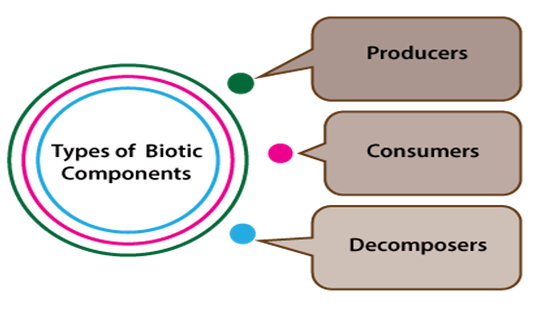Which abiotic factor would likely have the greatest affect on. The amount of food water in a habitat is an example of a limiting factor.

Chapter 13 Principles Of Ecology Section 13 2 Biotic And Abiotic Factors Ppt Download
These types of abiotic factors certainly have.

. Unbalanced ecosystem would negatively impact not only itself but the surrounding system as well. In a marine ecosystem abiotic factors would include salinity and ocean currents. Students work to describe the different abiotic cycles water carbon and nitrogen through a variety of activities from which they get to choose.
An abiotic factor is a non-living part of an ecosystem that shapes its environment. For example if a plant is adapted to low temperatures and the specific are where it lives has a change in its temperature thanks to global warming this plant will die and this area will no longer support life which is due to the change in abiotic. Environmental impacts include interrupting or adversely altering energy water nutrient and carbon cycles declines in biodiversity increased carbon emissions and weed.
Other factors include geographical space predation. Effects of Cycles on Ecosystems. The bodies of living things are almost made up of water likewise the earth is 70 water and 30 land.
Natural disasters such as earthquakes volcanoes and forest fires are also abiotic factors. 6 What effect do abiotic cycles have on ecosystems Brainly. The organisms in the desert are also adapted to the.
Terms in this set 12 Geoengineering will have no negative effects on the environment. Abiotic and biotic factors work together to create a unique ecosystem. Our objective is to expand our understanding biotic and abiotic factors within different ecosystem and the inter.
Air composes of. Biotic factors are all the biological conditions of an environment for a specietaxa. Changes in abiotic factors can result in extreme problems for some organisms.
The fluctuations of seasonal cycles can cause populations to. Both abiotic and biotic factors determine both where an organism can live and how much a population can grow. Some forest ecosystems have evolved in response to frequent fires from natural as well as human causes but most others are negatively affected by wildfire.
An ecosystem is the living organisms in a particular area together with the non-living components of the environment such as soil air and water. Key ideas include matter moves through ecosystems via the carbon water and nitrogen cycles. Biotic and abiotic factors are the environmental conditions that the organisms have to face to live in a specified environment.
In a terrestrial ecosystem examples might include temperature light and water. When the cycles occur more frequently like the water cycle in the rainforest the living components of the ecosystem respond accordingly. 7 How does nutrient cycling affect ecosystems.
Heat salinity pressure light wind pH. The aim of this experiment is to compare different ecosystems and look at the components and features which are similar and different. Populations are influenced by fluctuations in any of the abiotic cycles.
The student will investigate and understand that biotic and abiotic factors affect an ecosystem. A limiting factor is a factor that restricts the size of a population from reaching its full potential. The organisms in the rainforest are adapted to the conditions of the abiotic cycles in that region.
8 What are the ways by which organisms affect nutrient and energy cycles. Air - is a mixture of several gases. Carbon is found only in living organisms.
9 What is the importance of biotic and abiotic components in nutrient cycle. Biotic and abiotic are the two essential factors responsible for shaping the ecosystem. Helps in the process of photosynthesis and other cycles in nature 2.
Abiotic factors that affect communities. The biotic factors refer to all the living beings present in an ecosystem and the abiotic factors refer to all the non-living components like physical conditions temperature pH humidity salinity sunlight etc and chemical agents different gases and mineral nutrients. Basically adaptation is the main impact Abiotic cycles have a great impact on ecosystems.
Abiotic factors are the physical and chemical conditions of an environment. It is the second key abiotic factors that contribute to ecosystem where birds can fly and seeds can be disperse.

Abiotic Components Of Ecosystem Javatpoint

Our Environment Class 10 Biotic Abiotic Biotic Resources

Chapter 13 Principles Of Ecology Section 13 2 Biotic And Abiotic Factors Ppt Download

0 Comments